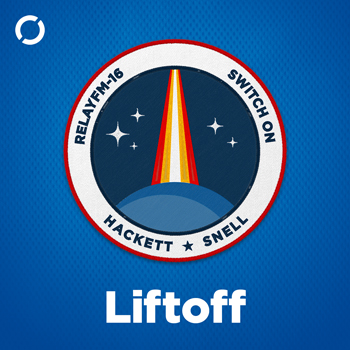Latest Episodes
#131: Windex for Rockets
August 25th, 2020 · 45 minutes
It's a busy week on Florida's Space Coast, and supernovas are in the news. Thankfully the two won't cross paths. Neither will Earth and an asteroid the day before Election Day in the United States.
#130: A Salted Almond in Space
August 11th, 2020 · 40 minutes
Bob Behnken and Doug Hurley have splashed down after their historic mission to the ISS, and SpaceX's finally gotten a Starship test article to hop in Texas and the OSIRIS-REx team is gearing up for their sample return flight.
#129: Dirt in a Soccer Ball
July 28th, 2020 · 38 minutes
Mars 2020 is set to launch in just a few days, and should be followed by the splashdown of the Commercial Crew Demo-2 mission. Elsewhere, Virgin Galactic has shown off the interior of its space tourism craft, and we remember Rene Carpenter.
#128: Summer of Mars
July 14th, 2020 · 52 minutes
There are three missions bound for Mars launching this month, and Jason walks through them each. Then, Stephen gives a NASA budget update and the two get into some space law ... and guidelines.
#127: Wormy Space Coin
June 30th, 2020 · 46 minutes
This week: black holes doing weird black hole things, a progress report on the SLS and a discussion of how some of NASA's facilities should be renamed.
#126: Astronauts are Really Good at Moving
June 15th, 2020 · 40 minutes
The crew of Demo-2 are likely working on orbit until August, while here on the ground, COVID-19 is taking its toll on NASA schedules. Also: a conversation about CLPS and Gateway, as well as NASA's new Director of Human Spaceflight, Kathy Lueders.
#125: A Sparkly Dinosaur
June 2nd, 2020 · 49 minutes
The age of Commercial Crew has arrived, with Doug Hurley and Bob Behnken arriving at the International Space Station safely after riding a Falcon 9 there this weekend. Also: tiny CubeSats can do big things and Tom Cruise may be taking a trip.
#124: Space Koozie
May 19th, 2020 · 43 minutes
The Artemis Accords have been unveiled, but will their adoption be hurt by their rollout? Could Starship be more useful as a refueling station than a lander? Jason and Stephen get into these questions and more this fortnight.
#123: Lunar Camper
May 5th, 2020 · 51 minutes
NASA has unveiled its plans to source a lunar lander for the Artemis program, while Hubble celebrates its 30th anniversary.
#122: Get an Exoplanet; Lose an Exoplanet
April 21st, 2020 · 49 minutes
May seems to be the Month of Commercial Crew! Also: NASA is working from home, an exoplanet may be no more and a look at a future Mars sample return mission.

